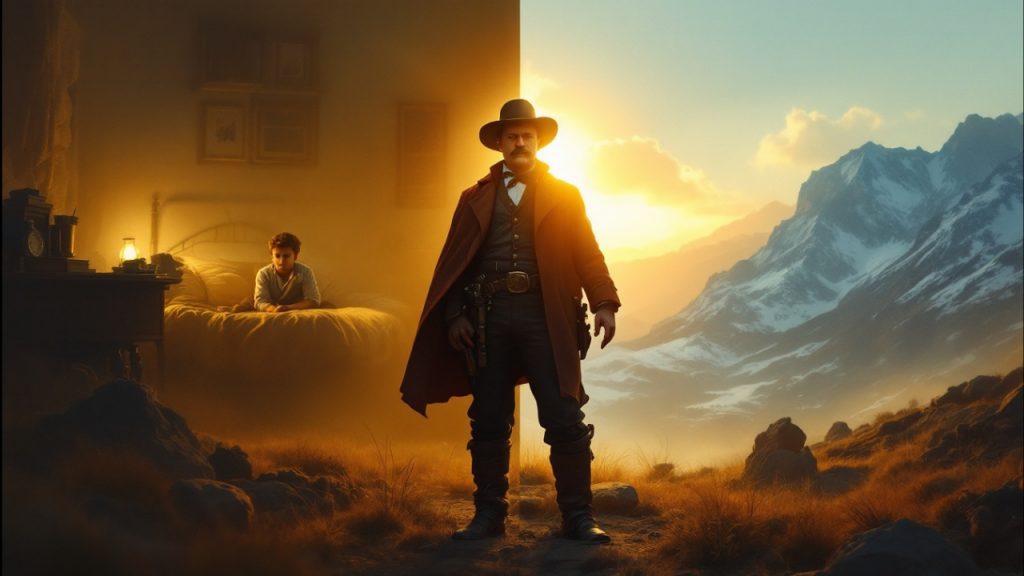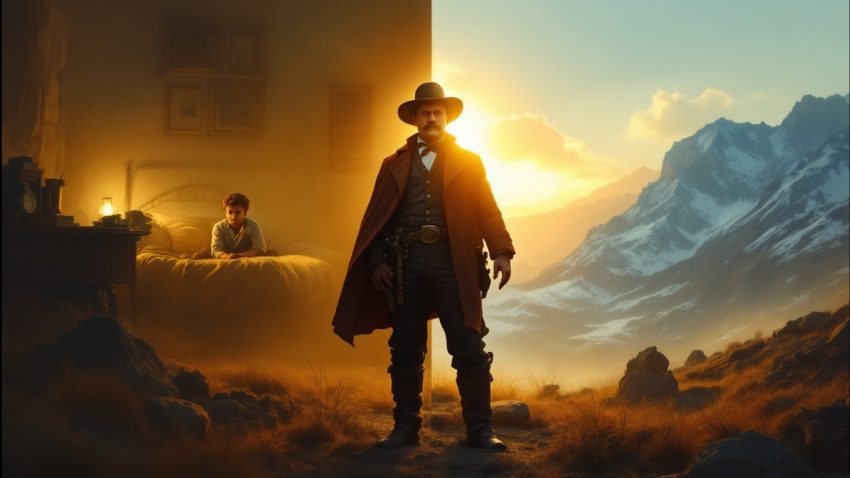
Theodore Roosevelt’s life is a testament to the power of resilience and determination. Born a sickly child plagued by severe asthma, Roosevelt defied all odds to become one of the most dynamic leaders in American history. How did a boy who struggled to breathe rise to lead a nation? His journey was not driven by fleeting motivation but by a system of deliberate daily habits that turned his weaknesses into unshakable strengths. Roosevelt’s story is a powerful reminder that adversity can be the foundation of greatness.
The Frail Boy Who Couldn’t Breathe
Picture a young Roosevelt, his small chest heaving with every breath, trapped in his bedroom while other children played freely outside. His severe asthma attacks were so debilitating that his parents constantly feared for his life. “I was a sickly, delicate boy,” Roosevelt once wrote, recalling the isolation and frustration of his childhood. Medical treatments in the 1860s were primitive at best, offering little relief. Coffee, whiskey, and even smoking dried stramonium leaves were prescribed, but nothing worked.
Despite his frailty, something extraordinary began to take root within Roosevelt—a fierce determination to overcome his limitations. This resolve was sparked by his father’s profound words: “You must make your body.” Roosevelt took these words to heart, launching a rigorous physical transformation that would forever change his destiny.
Building Strength One Habit at a Time
At just 12 years old, Roosevelt’s father installed a home gym in their Manhattan brownstone, encouraging his son to build his body. Instead of heeding Victorian-era advice to rest, Roosevelt embraced challenge. He began lifting five-pound dumbbells, gradually increasing the weight. He practiced boxing, often collapsing in exhaustion only to return the next day with renewed vigor. Pull-ups became a daily ritual, starting with one and eventually reaching ten consecutive repetitions.
Progress was slow but steady. Each small victory—a hike without an asthma attack, a full night of uninterrupted sleep—built his confidence. By the time Roosevelt entered Harvard, he had transformed into a boxer, wrestler, and outdoorsman. His asthma never fully disappeared, but its grip weakened as he grew stronger. Roosevelt himself proved that consistent action, not occasional bursts of effort, creates lasting change.
Surviving Unimaginable Loss
Just as Roosevelt had rebuilt his body, life dealt him a devastating emotional blow. On Valentine’s Day in 1884, he lost both his mother and his wife within hours of each other. His diary entry for that day was stark: “The light has gone out of my life.” Overwhelmed by grief, Roosevelt abandoned his promising political career and fled to the Dakota Badlands.
The harsh wilderness mirrored his internal desolation. Yet, it was here, amidst brutal winters and relentless challenges, that Roosevelt began to heal. The Dakota Territory demanded his full attention—blizzards threatened cattle herds, and thieves targeted isolated ranches. These life-or-death struggles forced him to focus outward, slowly transforming his grief into resilience. Roosevelt discovered that healing doesn’t come from waiting for pain to fade; it comes from forward motion.
A Presidency Defined by Action
When Roosevelt eventually returned to public life, he brought with him a renewed sense of purpose. As the 26th President of the United States, his dynamic leadership shocked the political establishment. Known for his “strenuous life” philosophy, Roosevelt turned the presidency into a whirlwind of action. He conducted meetings while boxing with professional fighters, swam naked in the freezing Potomac River, and led point-to-point hikes that left foreign diplomats struggling to keep up.
Roosevelt’s approach to leadership mirrored his personal philosophy: greatness comes through deliberate resistance and balance. Just as he had strengthened his body through disciplined habits, he believed that America’s corporations required regulatory oversight to achieve sustainable growth. His conservation efforts reflected this same principle, preserving wilderness as “gymnasiums” for future generations to test themselves against nature.
The Blueprint for Transformation
What can we learn from Roosevelt’s extraordinary journey? His life offers a timeless blueprint for overcoming adversity:
Confront weaknesses head-on: Roosevelt didn’t shy away from his frailty; he faced it with determination.
Build consistent systems: Daily habits, not sporadic efforts, fueled his transformation.
Seek challenging environments: The Dakota Badlands and personal tragedies forced him to grow in ways he couldn’t predict.
Move forward through pain: Roosevelt’s forward motion turned grief into resilience and purpose.
Carrying the Legacy Forward
Theodore Roosevelt’s life is a reminder that greatness isn’t reserved for the naturally strong or gifted. It’s forged through deliberate, daily actions that transform weaknesses into strengths. His famous words, “The credit belongs to the man who is actually in the arena, whose face is marred by dust and sweat and blood,” continue to inspire countless individuals to embrace the challenges that life throws their way.
What weaknesses in your own life could become the foundation for your greatest strengths? Roosevelt’s story proves that no matter the odds, deliberate action and resilience can lead to extraordinary transformation. What’s your first step toward greatness?

